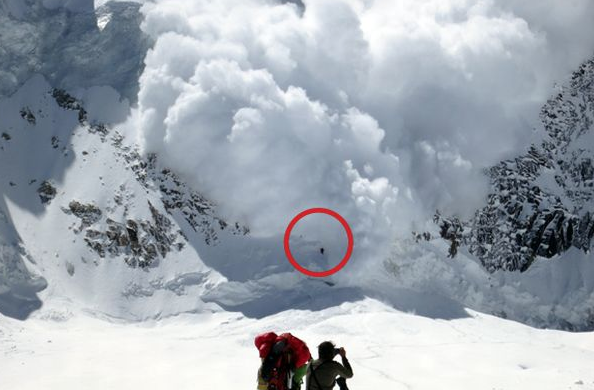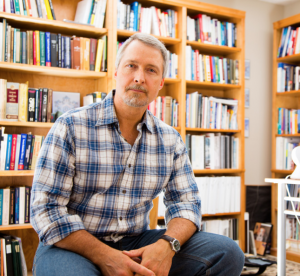
By Rob Shaul and Lindsay Mann
Background:
In an August article, we asked if there was a better way to teach the Heuristic Traps common in many avalanche accidents.
In September, we decided to reach out to the expert – Avalanche researcher Dr. Ian McCammon, who’s 2004 study, Heuristic Traps in Recreational Avalanche Accidents: Evidence and Implications is cited as the seminal paper on the subject.
Specifically, we asked Dr. McCammon why human factors are not a greater focus of avalanche education books and courses. Before our interview – we sent Dr. McCammon some of our thoughts and questions – which are reprinted below.
HERE is Part 1 of our Interview with Dr. McCammon. Following is Part 2…
QUESTIONS SENT TO DR. MCCAMMON PRIOR TO OUR INTERVIEW
PART 2 OF THE INTERVIEW TRANSCRIPT

MTI: One of those things that we’ve thought about was suggesting a set debrief questions, penetrating provocative questions, that were general enough to cover those hard topics.
McCammon: When I do my own human factor teaching – for whats it’s worth – is by the time the accident has happened and you’re trying to process the aftermath the horse has left the barn. From a psychosocial setting the horse has already left the barn.
MTI: Are there better debrief questions that we can have to give more tools to recreational users that don’t have incentive to do a debrief after each day of touring, so that they can learn from their experiences on a day to day basis before an accident happens?
McCammon: I really think thats’ one of the paths to addressing this issue. Rather than waiting until after the accident, starting before the accident happens and looking back on your experience and pulling out trends on your near misses or times you’ve made bad decisions.
I don’t know you have been over the FACETS test, thats a way that you can uncover patterns in your past decisions that are weaknesses.
That’s really the first step, identifying the patterns of your weaknesses, the patterns that have led you to near misses in the past.
The second thing is before you even go out in the field, planning for the psychological terrain that you’re going to face. We’re really good about planning for the physical terrain, where does it get steep, where are our transitions, wheres the steepest most risky part…
What we’re not good at is looking through the terrain of our psychological stress. When we’re at the top of the slope that’s when we’re paying the most attention unless there are other things present. Maybe the end of the day is actually the crux for us, maybe we’re tired and we know that at the end of the day when we’re tired we tend to cut corners. Even a relatively small risk, at the end of the day when you’re tired or it’s getting dark, could actually be the crux of your day. So thinking about your tour plan in those terms where the psychological most dangerous points is the next step.
The last step is in the moment, doing the pre-mortem. If I do this and something goes wrong and what is missed. That’s actually a tool you may already know, it was developed for the Marines’ to deal with their friendly fire issues.
Really those three are the things that you have to do up front and if you’ve done those three things up front it sets up for a much more effective debrief. You don’t have to do it from the ground up every time. You have a framework to already discuss – “oh, did we get the crux point right?” “What flaws in our past came out today?”
Then you have a ready made framework, otherwise you have to make it up as your goes. I think that’s why people don’t do it.
MTI: We like the idea of going over the psychological terrain, how about the traps that are more social based?
McCammon: Anticipating where the riskiest parts are based on your history. If you look back in your history and say under certain circumstances you’ve made bad decisions – say its a woman skier from a different area and you want to show her some really good powder skiing. In a case like that under those conditions where would I make the biggest mistake? Maybe it would be at the top of the run because there’s a lot of pressure – there’s a lot of pressure to perform. There might be other social ones like other people. Where are we most likely to encounter other people?
If that’s one of your weak spots then that could be the crux for you and that would shape a decision that you might not be entirely objective about.
Again, that FACETS test and running through those six heuristic tracks.
Familiarity, Acceptance, Commitment, the Expert Halo, the race for first tracks, and social proof.
Running through those and figuring out based on my history, am I most susceptible to, and looking at those crux points in the tour is really a good way to set yourself up.
MTI: Along these social traps and social factors, have you been able to glean anything from other communities that have impressed you
McCammon: One thing that I fundamentally believe is that recreationalists and professionals are really trying to solve two different problems when they’re in the backcountry.
The experiences that they’re trying to have are very different.
In one setting its a job. It’s a job – you’ve trained for, its your responsibility to manage risk, you’re being paid to be there, you’re being paid to manage to risk of others, or its an expectation of that position. As a result self discipline is reasonable to have and in fact, its expected by your partners. Your team is going to support you in all of those behaviors. If you screw up there will be a social penalty that you’ll pay within your team. Thats the professional environment. Really the goal there is to keep doing your job and keep your job.
If you switch over to the recreationalists, they’re trying to solve a fundamentally different problem. They’re doing it for pleasure, primarily for themselves, part of it is the group experience. The end result of that is a pleasurable experience. Thats why rules tend not to go well in that environment. There’s actually some physiological reasons for that when we’re engaged in hedonic activities our brain tends to produce more dopamine and more epinephrine and our brain actually become impaired for doing analytical processing. The brains heuristic processing tends to become more amplified we tend to use more heuristic methods in hedonic activities.
The bottom line is professionals and recreationalists are facing two fundamentally different problems.
The tools that are developed for professionals and recreationalists have to be reflect the different problems that they’re trying to solve. If they don’t reflect this then they aren’t very effective.
I think we’ve seen this with attempts to incorporate professional tools in the recreation environment. Recreationists all agree – thats a great idea but they don’t do it. Its like saying why don’t people who commute to work behave more like cab drivers. They’re trying to solve different problems.
MTI: Have you identified any flaws in the tools that avalanche professionals use?
McCammon: I am not familiar with any studies, in the avalanche world, of what works and what doesn’t work in the professional world. This is an interesting question- I did a presentation a few years ago in Norway – I did a survey on all of the different checklists and tools that have been developed for avalanche decision making over the years.
I think the very first one I found was in 1911, somebody came up with a little checklist. I went through all the literature that I could find and I found dozens of check lists, little pneumonics, little tricks, and the thing that struck me is that as the avalanche community we’ve come up with literally dozens of these.
To my knowledge nobody has looked and these and said which ones are more effective than others and when do they work, and why do they work. I think that would be a really fascinating area of research.
MTI: Do you think that the split that is coming up in Avalanche education between recreational and professions, do you think that will help us to continue to look at these tools more since we’re specifically splitting these two groups?
McCammon: I think that it certainly won’t hurt splitting up the two tracks. The one thing that I’m concerned about is the recreational risk management travel in terrain, becomes a “light” version of the professional version. It’s just been simplified and it’s not as dense. That’s my biggest concern and I don’t have a lot of confidence that thats going to address the issue. Again, because recreationalists are facing a fundamentally different problem then pros. The idea is that if we have something for pros that it should have the recreationalists.
I think its great to come up with new curriculum but one of the responsibilities that we have is to try to access of the effectiveness of what we teach – to see whats making a difference and whats not making a difference. Things that do have an impact, why do they have an impact? That’s a little more homework but I think its inherent on us as educators to do that.
MTI: What area is screaming to you that needs to be researched right now in terms of human factors and avalanche safety?
McCammon: I did some work in out of bounds avalanche accidents and one of the things I learned is the most important questions is, “What are the influences on peoples’ decisions in the backcountry?
There’s been a little bit of preliminary work on this, if we understand that, if we understand the key to influences then we have a hope of addressing them and giving people the tools they need to manage those influences.
MTI: Can you give examples of some of those influences that you observed?
McCammon: One example would be the ski movie culture, one of them would be skiing in mixed groups, another would be the presence of other people, another would be are you guiding people that are very afraid of the hazard or are you guiding people who are pushing you to your limits- any of those would be worthwhile to study, any one of those would be a great research project.
There’s a whole tapestry of influences psychosocial influences that are driving peoples behavior and if our goal is to give people the tools to manage those influences better then I think we really need to understand them.
Since we interviewed Dr. McCammon, the Denver Post reported on the concern’s about social media’s affect on avalanche safety voiced at the October International Snow Science Workshop in Breckenridge.
Here’s another piece on the subject, recently published in Adventure Journal.
